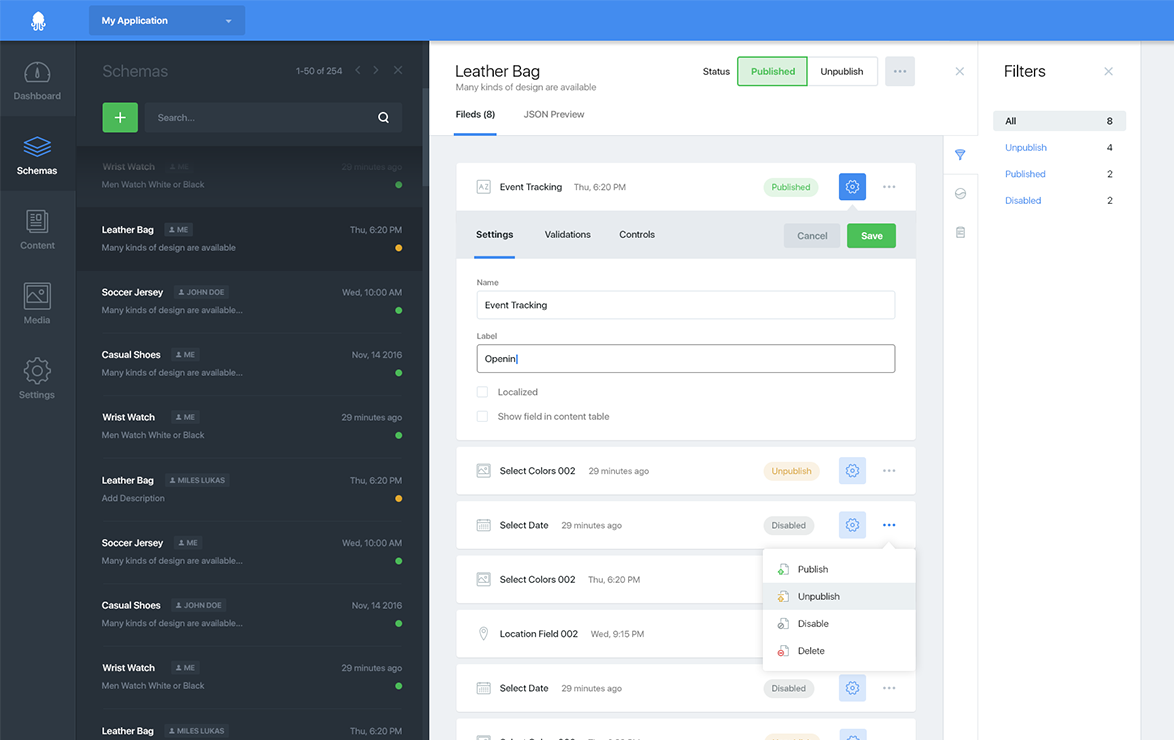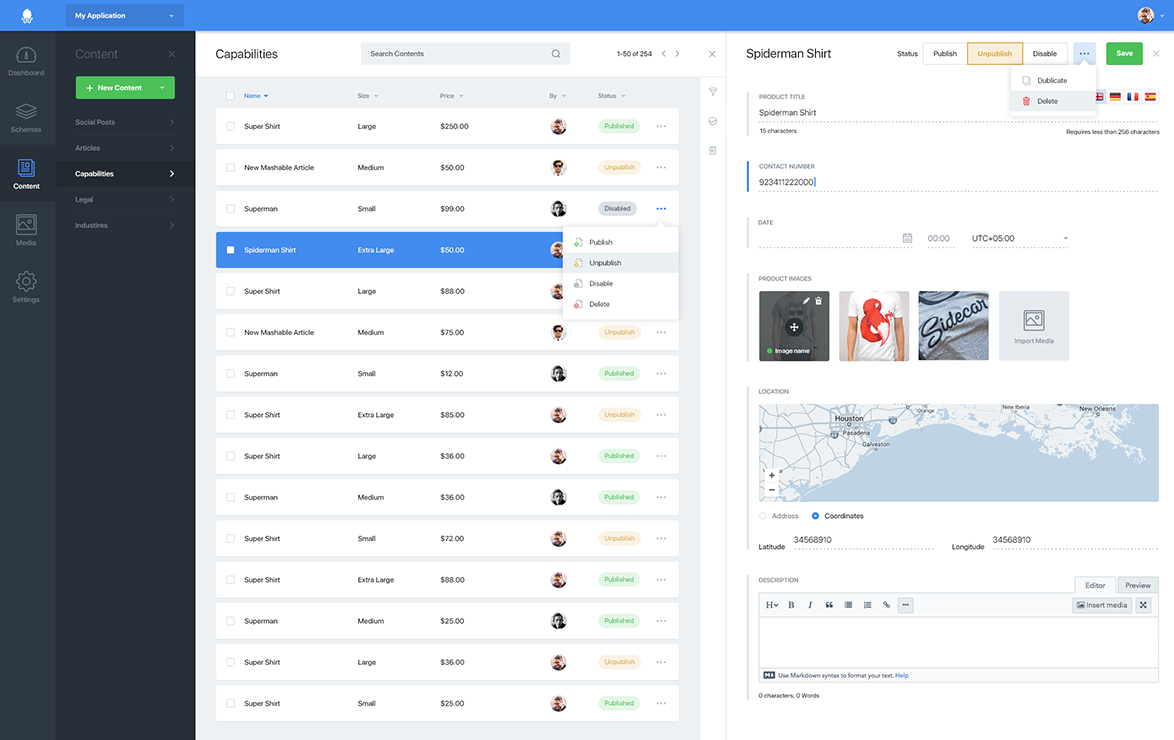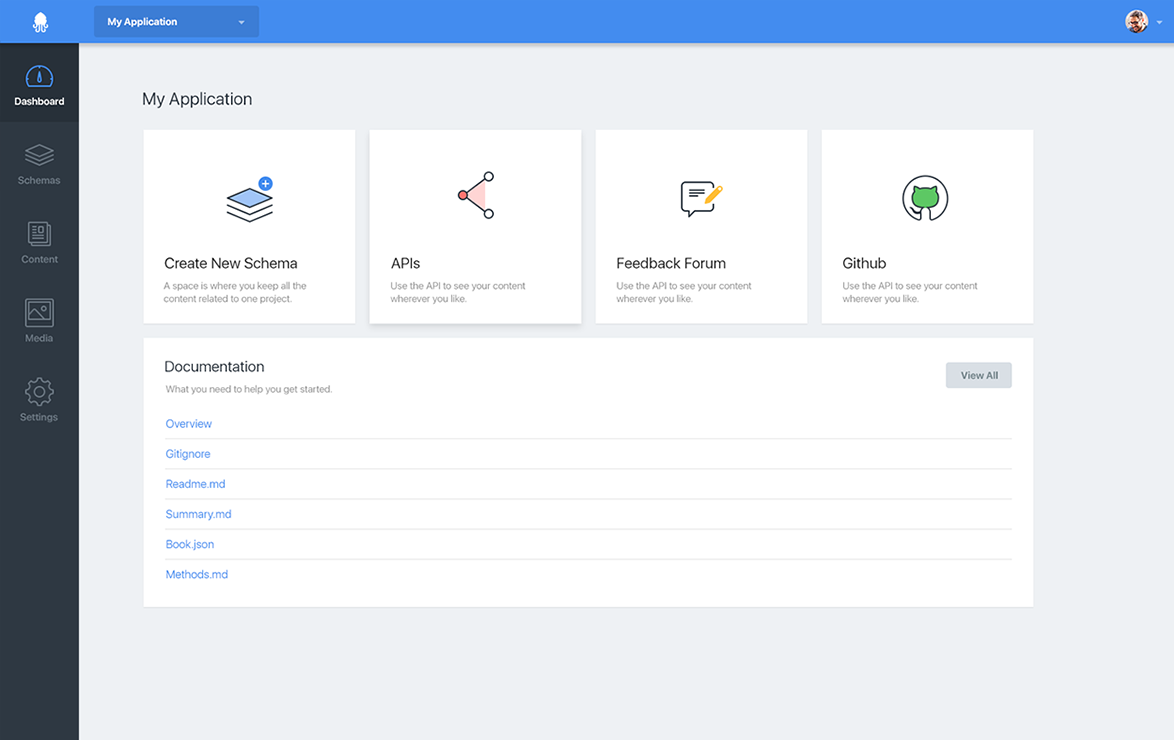

Invite other users to your projects and assign them to different roles.
Define languages and manage your content for multiple markets.
Audit log and history to track when your content has been changed.
Filter your content and save the filters to reuse them later.
Define which content will be published and is accessible from the API.
Define access keys for client applications, e.g. your website or mobile application.
Rich editors to manage the content in multiple ways, e.g. Markdown or WYSIWYG.
Upload media files and link them to your content.

The first step is to define the structure of your content. For each content type you define a schema. For example a blog post might have the following fields: A title, a description and a the text. For each field you can define you want to edit it and validation rules to keep your data consistent.

Create and manage your content in the management portal and publish the content if you are ready to go. All activity is tracked and deleting a content means just hiding it. You’ll never irreversible lose data again.

Once the content is created you can consume it from your client applications. For example from your mobile application, a website or just another server. We create a swagger document for your schemas and an API documentation. Of course you can also create, update or delete content from your clients.

